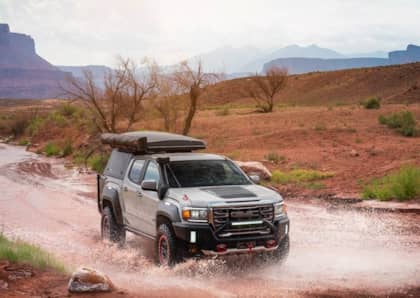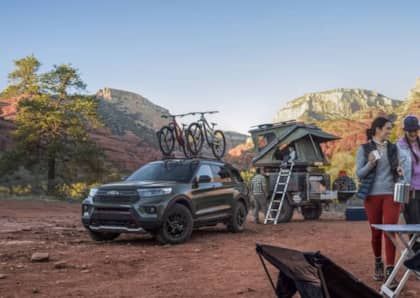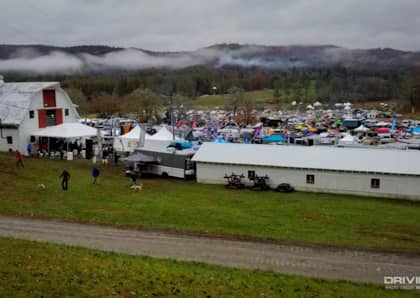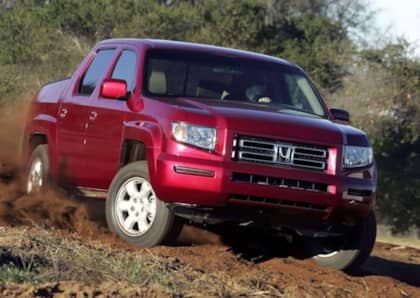A History of the Unimog, The World's Most Versatile 4x4 Truck And Overland Champion
The Unimog—short for Universal-Motor-Gerat—has been a part of the off-road truck landscape since the 1940s. Daimler-Benz began building the Unimog in 1951, just a few short years after a company named Boehringer (operating in conjunction with American occupying forces and lead by Daimler-Benz designer Albert Friedrich) had started producing small runs of the original prototype. Eventually the vehicle would become an official Mercedes-Benz staple, and was also sold in some markets under the Freightliner badge.

Initially intended to provide farmer and foresters with a go-anywhere mobile platform for all manner of machinery, the 'Mog is unique in that its production has continued to the modern day with very few changes made to its original design concept. While the details have been modernized, the mission remains the same, and it's the simplicity of the Unimog that has made it both an indelible part of the overland scene, as well as a hardcore 4x4 for those who want to go large on the trail.
Flexible Flyer
Unlike a traditional truck, the Unimog makes use of an unusual ladder frame that sacrifices rigidity for flexibility. The suspension makes use of torque tubes, transverse links, and coil springs that allow for a fantastic degree of articulation, ensuring that the wheels remain in contact with the ground even when forced at extreme angles.

The transmission can also pivot around a three-point mounting setup to improve suspension movement. The trade-off is less total load carrying capacity, but the still-mighty 'Mog can get its load where more traditional 4x4s simply can't reach.

Two more key Unimog features are the dog-type clutches in its front and rear locking differentials, and the use of factory-installed portal axles.

By gearing the wheel from the top (using an individual gearbox for each hub) rather than the center it's possible to lift the axle much higher off the ground to dramatically improve clearance.
Prowess Both Off-Road And On
It was clear from the beginning that the Unimog was versatile enough to push past its original agricultural intentions and into almost every aspect of rebuilding a war-torn Europe. Of particular note was the 'Mog's power take-off function, which make it easy to operate heavy machinery under difficult conditions where tractors and other types of equipment simply couldn't be used.

The Unimog quickly became know for its hardcore all-terrain capabilities. Thanks to exceptional approach angles and the breakover angles facilitated by its flexible chassis, the truck could easily handle slopes of up to 45 degrees (a 100% grade).

One of the toughest obstacles to clear, this grade required the Unimog to accelerate up with a force past one g, a tribute to the vehicle's low center of gravity and overall stability. Its mechanical components were also designed to keep water out using internal pressure, giving it the ability to ford nearly four feet of water in certain configurations.

It wasn't just its off-road capability that endeared the Unimog to the first wave of buyers, both corporate and private. It also trumped tractors in terms of just how easy it was to drive on regular roads.

Without over-sized rear tires the 'Mog could travel at reasonable speeds and keep up with the flow of traffic, and its flexible chassis also absorbed rough asphalt without pitching the truck up and down or side-to-side.

All versions of the truck were powered by diesel engines, typically large-displacement 6-cylinder designs.
A Mog For Every Season
The combination of its power take-off, its unstoppable off-road skill set, and its ease-of-use on a daily basis saw the Unimog adapted to a wide range of tasks as the decades wore on.

Fire departments, parks, search and rescue outfits, transport companies, construction companies, militaries, and highway departments all joined the list of organizations adding 'Mogs to the fleet.

As demand continued to diverge form the original short-wheelbase, single-cab, canvas-top spec, Mercedes-Benz kept pace by expanding the range of Unimog specifications at a rapid pace, introducing heavier-duty models as well as numerous available wheelbases. Eventually a dazzling array of Unimog configurations flooded the market and contributed to the vehicle's reputation as offering Lego-like customization options.

The Unimog would also find favor in off-road racing. Specifically, the rugged truck was tailor-made to dominate the long-distance rallies like Paris to Dakar. This helped raise the global profile of the 'Mog in the 1980s, which was never sold in large numbers in North America due to regulatory concerns (crash safety and emissions), feeding into a thriving grey-market import trade.
Still Going Strong
Today, the Unimog is as popular as it ever was among commercial customers forced to parse off-road routes where traditional 4x4s simply can't cut it.

In the United States, the 'Mog has become a strong choice as a full-size overlanding platform for upscale outfitters, given its ease of maintenance, comfortable ride, and generous hauling capacity.

With so many models out there, and a robust supply of parts and aftermarket experts willing to walk owners through any modification they might care to make, the Unimog continues to serve as an outside-the-box option for anyone who's looking for a unique super-sized 4x4 build.
More From Driving Line
- Need a 4x4 truck that can withstand the apocalypse and overland in style? Check out these end-of-the-world survival machines.











